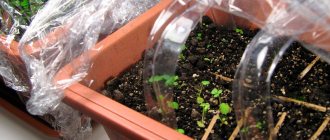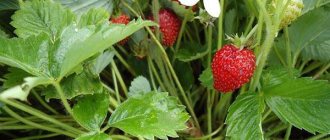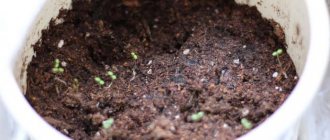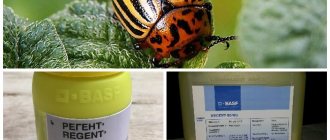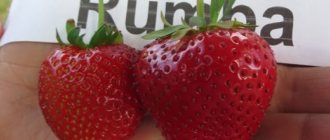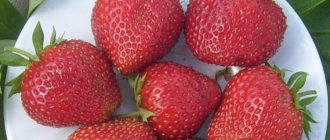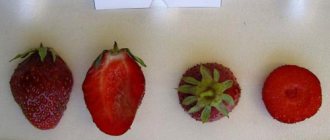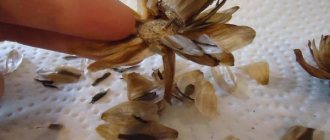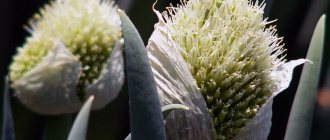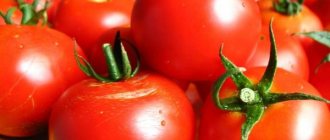Terminology
At the beginning of the story, let's understand the terminology. Many people confuse the names strawberry, strawberry, Victoria. On gardening websites, for example, you can find the following phrase: strawberries Baron Solemacher, which is completely wrong.
The differences and features of berry terminology are summarized in the following table:
| Term | Designation |
| Strawberries | The common name of a plant species. |
| Wild strawberry | The ancestor of other berries. Small conical berries grow in forests and on the edges. |
| Strawberry | A dioecious species of strawberry with round, non-conical berries and a difficult to separate pedicel. Grows mainly in meadows. |
| Garden strawberries | Cultivated varieties of berries are grown artificially in garden plots. |
| Victoria | A variety of garden strawberries. Due to its popularity, it has become a household name for many. |
| Remontant strawberry | A type of strawberry with continuous, remontant flowering and fruiting throughout the growing season. |
Description of the variety
Strawberry variety Baron Solemacher is low-growing. The maximum height of the bushes reaches twenty centimeters. The diameter depends on the year of growing season; the volume increases with each season due to growth from the roots.
The peduncles of the Baron Solemacher variety are low, so the berries are often hidden under taller foliage
The leaves are light, typically strawberry-like with sharp teeth. There are no whiskers, the flowers are bisexual, artificial pollination is needed only in protected ground or on a balcony, where there is no natural movement of air or wind.
In central Russia, the variety begins to bloom around mid-May, and the first berries can be tasted by the beginning of June, and in the south even earlier. Fruiting ends only by the end of September, and in years with a mild climate until mid-October.
The variety is frost-resistant; under snow it easily tolerates temperatures down to -35 degrees Celsius. It can also withstand heat, but during long droughts it needs watering, otherwise the yield will decrease.
Attention! The yield of the variety, according to seed producers, is 80 kilograms per hundred square meters per season.
We also note that Baron is resistant to strawberry diseases and pests.
Correct care technology
In order for the harvest to be plentiful, the berries to be large and fragrant, it is necessary to pay attention to strawberries throughout the season. Here are some measures used when caring for this variety:
- Watering should be regular, but in moderation: excess moisture can cause the formation of putrefactive diseases, and the berries will be watery;
- loosening the soil should be constant, after each watering;
- mulching with straw will help the soil stay moist for a long time and the berries dry;
- It is necessary to feed the plants several times a season;
- Constant inspection is carried out to identify various pests;
- dried leaves are removed to prevent pests.
Important! You cannot water strawberries directly from a hose or irrigate the leaves from above. Strawberries are watered under the root using a watering can or through a drip irrigation system
Fertilizing will give strawberries strength to grow and form berries. It is produced in the spring during digging, then after planting with a weak infusion of organic matter, with the addition of superphosphate and ash.
The next feeding - with the appearance of flower stalks and ovaries - with highly diluted mullein or bird droppings. The leaves can be irrigated with fermented nettle infusion. At the end of summer - only an infusion of superphosphate with wood ash.
For abundant and long-term fruiting of strawberries of the Baron Solemacher variety, it is necessary to comply with the basic requirements for the cultivation of this berry crop. Fruit-bearing plantings, which require high-quality nutrition and timely application of fertilizers, require special attention.
| Fertilizer application timing | Composition of applied fertilizer |
| Fertilizing in the spring | Slurry, ammonium nitrate, ammonium sulfate and potassium nitrate |
| Feeding during the green ovary phase | Slurry, ammonium sulfate, ammonium nitrate, potassium nitrate, superphosphate, potassium salt and potassium chloride |
| Feeding after the last harvest | Slurry or bird droppings, ammonium nitrate, ammonium sulfate, potassium nitrate, superphosphate, potassium salt and potassium chloride |
Fertilizers need to be supplemented with watering. Abundant and regular watering with warm water should be carried out. Strawberries especially need irrigation before the flowering phase and after flowering, at the stage of setting and filling the berries. The main measures for caring for garden strawberries also include regular weeding and loosening of the soil. The use of organic mulch reduces the required amount of weeding and improves the air permeability of the soil on the site.
| Growing season | Product used |
| Early spring period | Spraying plantings with 3% Bordeaux mixture |
| Beginning of leaf regrowth - protrusion of flower stalks | Spray the plantings with 1% Bordeaux mixture with the addition of 1% colloidal sulfur or 0.5% sulfur |
| From the beginning of bud formation to flowering | Spraying with 1% Bordeaux mixture with added sulfur |
| Immediately after flowering until the end of berry picking | Spray with Lepidocide |
| After harvest | Spraying against strawberry-raspberry weevil and strawberry mite with Karbofos. To combat diseases, spray with 1% Bordeaux mixture with added sulfur. To combat nematodes, Thiozan is used at the rate of 1.0-1.5 kg per 10 square meters. m of territory |
A very good effect was noted when using the “Ovary” preparation in the process of growing this variety of strawberries. Also, after loosening the soil with a rake, it is advisable to fertilize the plants with wood ash at the rate of 1 cup for every 5 fruit-bearing plants.
During the growth of bushes, the watering interval should be 7-10 days (if there is no rain), and during the formation of berries - 5 days. Water this delicate berry very carefully, under the root, using a watering can. You cannot water bushes directly from a hose or spray water from above. The drip irrigation system is very effective.
Characteristics of berries
Let's move on to the description of the berries themselves. They are small, weighing 4-5 grams. The taste is sweet with a slight sourness, the flesh is dense, thanks to which they tolerate transportation well and are stored fresh for a long time.
It is not recommended to pick unripe berries - they are tasteless, bland and have little juice.
The color of the berries of the Baron Solemacher variety is bright red with a shiny tint; when cut, the pulp is white
Berry composition:
| Sugar | 7,7 % |
| Acid | 0,7 % |
| Vitamin C | 82,3 % |
Berries are used:
- fresh;
- frozen;
- prepare jam;
- compotes are cooked;
- add to jelly;
- whip up smoothies.
Another option for growing seedlings
To do this, you can use a plastic box, the lid and bottom of which have holes. Cherry tomatoes are often sold in such containers. This option is good because it frees you from ventilation, watering, etc. When filling such boxes with soil, there should be enough space for the seedlings to grow.
Strawberries Baron Solemacher (reviews from gardeners confirm this) take a long time to sprout and are unfriendly. When the first tiny leaves appear on the seedlings, natural daylight will be enough for them. Sowing containers can be kept on the windowsill, and, as a rule, they do not require additional lighting.
Advantages and disadvantages of the variety
The Baron Solemacher variety has a number of undoubted advantages, including:
Diseases of garden strawberries and their control
- good berry taste;
- long fruiting;
- high productivity;
- good keeping quality and transportability;
- unpretentiousness to growing conditions;
- frost and heat resistance;
- resistance to diseases.
Among the disadvantages, we note the need to replant the bushes to a new place after four years, as well as the importance of fertilizing to obtain a full harvest.
Reproduction
Strawberry Baron Solemacher does not grow a mustache, so the variety is propagated by seeds and division of the mother bush. Since the yield decreases every year, the plant must be regularly rejuvenated. To do this, adult bushes are dug up and carefully divided into sections. Each division must have at least 5 leaves and a well-developed root system.
The division of the bush is carried out in spring or autumn. After planting, strawberries will begin to bear fruit abundantly and bear large, sweet berries.
Since the variety is not a hybrid, it can be propagated by seeds. A plant grown from seeds will form a powerful, spreading bush in a year, which will bring a rich harvest.
Agricultural technology
Reproduction
Remontant strawberries propagate in two ways:
- vegetatively by dividing roots;
- seeds.
Vegetatively
As mentioned above, the berries need to be updated at the planting site. This is due to both a decrease in the mineral reserves needed by the plant and a deterioration in the mechanical composition of the soil.
The work is usually carried out in the fall, without waiting for the end of fruiting of remontant strawberries. It is important that young plants have time to take root securely before the onset of winter frosts. If autumn is dry, you can build a temporary greenhouse over the plantings, increasing the humidity of the bed.
To transplant a plant to a new location, do this:
1. Dig up the whole plant.
2. Carefully divide the bush into individual seedlings.
3. Add the resulting “growing plants” to a new bed.
Note: An important condition is the abundance of roots on the seedling, and not the strength of its above-ground part.
The remaining bushes from the old garden bed can be given to friends and neighbors in the garden. The survival rate of plants is good, the main thing is to ensure that the roots are covered with loose soil.
Seeds
The Baron Solemacher variety is well propagated by seeds due to their high germination rate, reaching up to 95 percent.
The procedure for growing from seeds is as follows:
1. At the beginning of February, the seeds are placed in the refrigerator for two weeks for stratification.
2. Pour a layer of nutritious soil 3-5 centimeters thick into the container.
3. Apply a centimeter layer of snow on top.
4. Scatter the seeds directly on the snow.
5. Gradually melting snow seeps into the ground, taking seeds with it.
6. After the snow has completely melted, cover the container with film and wait for the entrances.
7. After 3-4 weeks, sprouts will appear; we move the containers with seedlings to a warm, illuminated windowsill.
8. In the phase of two true leaves, we dive the seedlings into separate containers.
Plants feel better in individual containers than in a common container.
Caring for seedlings consists of regular watering and one or two feedings, done two to three weeks in between.
Planting strawberries
First, let's decide on the choice of landing site. Baron Solemacher strawberries grow best in humus-rich light soils with neutral acidity. However, it is capable of developing well on clayey chernozem, provided that loosening materials are added.
The variety is very tolerant of shade; the bushes develop well in a little scattered shade from trees, although it is still better to place strawberries in areas exposed to sunlight.
It is not recommended to plant in lowlands or damp areas. In this case, it is necessary to build a high, fenced box bed and fill it with loose, permeable soil. To enrich the soil, humus, peat, ash, and compost are used.
The box gives a gain of 10-15 centimeters in planting height
Seedlings are planted in May in well-warmed soil. Place strawberries at intervals of 50 centimeters, preferably in a checkerboard pattern. With the tape planting method, the interval is kept at 30 centimeters, the distance between the tapes is 70.
The direct disembarkation process is simple:
- We mark the bed, dig small holes at the marked points.
- We water the holes.
- We remove the seedling from the container with a lump of earth.
- Place the plant in the hole and press it with soil.
- We mulch.
Note: When planting strawberries under agrofibre, first spread it on the bed and prepare holes for the seedlings.
Planting care
It is not difficult to care for strawberry plantings; the range of work comes down to the following:
- Regular watering and fertilizing.
- Loosening of plantings.
- Adding mulch.
- Removing weeds.
- Pest control.
Caring for strawberries Baron Solemacher
As Baron Solemacher's reviews of strawberries testify, even novice gardeners will not have any difficulties with growing them. The variety is not capricious and, with minimal care, will delight you with good harvests.
Mandatory processes that will have to be followed:
- regular watering;
- adding nutrient solutions;
- loosening the soil;
- removal of weeds;
- pest and disease control;
- preparation for the winter period.
The main thing is to carry out all processes in a timely manner, this will avoid many problems.
Watering mode
Timely moistening of the soil is a prerequisite that must be observed for active growth and fruiting of strawberries. Use only warm water that has been left in the sun. The rate of liquid consumption per bush is up to a liter. In hot weather, you will have to water at least twice a week. Pay special attention to the process during flowering, fruit set, and ripening.
Drip irrigation is considered the most effective way to moisten the soil. Regular supply of moisture to the roots of the bushes promotes constant fruiting and active ripening of fruits.
Feeding
During the warm season, you will have to add nutrient solutions to the soil several times. Apply the first fertilizing in March, immediately after the snow melts. It is advisable to use nitrogen fertilizers that promote active growth and development (ammonium or potassium nitrate, organic matter). It is not recommended to prepare solutions strictly according to the instructions; it is not recommended to exceed the dosage - abuse of nitrogen compounds will lead to a decrease in fruiting and intensive development of the above-ground part.
After the ovary appears, phosphorus and potassium compounds, compost solutions, and diluted slurry are added. In the fall, give preference to complex fertilizing and diluted chicken manure.
Weeding, loosening and mulching
Timely weeding plays an important role in growing Baron Solemacher strawberries. Weeds take away useful elements and moisture from the soil, which immediately affects the development of strawberries. At the same time as removing weeds, loosen the soil, trying not to penetrate deep into the soil layers - it is easy to damage the root shoots of the bushes.
A mulch layer will help reduce the amount of weeding and protect plants from sunlight and merciless frosts. Be sure to replenish sawdust, conifer bark, and peat after each loosening of the soil.
Protection from diseases and pests
Baron Solemacher strawberries are highly resistant to most diseases. Plants are rarely affected by spotting and rot, but it is better not to take risks and carry out preventive treatments. In the spring, even before the flowers appear, use a solution of Bordeaux mixture (3%), in the summer - a mixture of colloidal sulfur (1%), copper-based preparations.
During the period of fruit ripening, it is recommended to irrigate the bushes with Lepidocide. Complete the season with autumn treatment using Bordeaux mixture (1%).
Like diseases, pests rarely attack strawberries, although violations of agricultural practices can lead to the appearance of strawberry mites on the bushes. It is recommended to use Karbofos and Keltan to get rid of the pest.
Preparing for winter
Having collected the last red berries, you can begin preparing Baron Solemacher for wintering. Recommended:
- Carefully inspect each bush and, if necessary, sprinkle the exposed root shoots with soil.
- Apply an additional layer of mulch (especially in cold regions with harsh winters).
- After the first frost, cover the plants with geotextiles; be sure to remove the insulating fabric during the thaw period, allowing the strawberries to ventilate.
- in the spaces between the rows , which will help keep the snow on the bed and create an additional “blanket” for the plants.
It is not recommended to water strawberries in the fall - excess moisture in the soil is dangerous for plants.
Adviсe
Tip #1
Slugs are common pests of strawberries. If you have a lot of them in your garden, fill the voids between the plants with fresh sawdust. They prick the tender bellies of the mollusks, and they do not crawl onto the sprinkled bed.
Tip #2
If you want to prepare your own strawberry seeds, take them only from the top of the fruit. It is believed that this way the plants will fully retain their maternal qualities.
Tip #3
The use of organic mulch (rotted manure, peat, compost, leaf and pine litter, straw cuttings) will reduce the amount of fertilizing: with melt or rainwater, useful elements will penetrate directly into the soil of the bed.
FAQ
What mulch is most useful for strawberries?
Since the berry grows in the wild in forests on acidic soil, it is best to use fallen spruce or pine needles.
How often should you pick strawberry bushes of the Baron Solemacher variety?
During the season of mass ripening of berries, it is recommended to harvest every two days. It is better to go to the garden in the morning or evening, when it is cooler. If you plan to transport berries, it is advisable to pick the fruits one or two days before full ripening.
How to cover remontant strawberries for the winter? Is it possible to use agrofibre?
It is better not to use agrofibre to avoid overheating of the bushes. It is better to fill the bed with fallen leaves, mown hay or straw, and cover it with spruce branches.
Reviews
Reviews about the strawberry variety Baron Solemacher are mostly positive. There are some complaints about the weak yield and the fact that the berries become tasteless by the end of the season.
Eris: I grow strawberries from seeds. Old bushes lose their yield over time, so they have to be renewed every three to four years. I planted different varieties, but I liked Baron Solemacher the most.
Tanya-Tanya: My Baron Solemacher has been growing in one place for several years now, this year it will be necessary to replant it. The bushes are quite small. They bloom with small flowers. Forms several rosettes - antennae, but not always. The berries grow quite large. There are not many of them: three to five on a bush. If they don’t finish it, they won’t be sweet at all! The main thing here is not to yawn: pick it when the berry is completely red, but not too ripe. But words cannot describe how rich it is.
Alisa Skvortsova: I have been growing remontant strawberries “Baron Solemacher” for six years now. My parents and I liked this variety of wild strawberries. The berries are regular in shape and large.
Planting garden strawberries Baron Solemacher in open ground
Regardless of whether you grew Baron Solemacher strawberries from seeds at home or bought them, it is recommended to plant them in open ground in June. Summer planting will allow the bushes to take root well, take new roots; large plants often have time to please with rare flowers or even berries before the fall.
Before planting, carefully inspect the seedlings, especially the roots. The diameter of the root collar should not be less than 5-6 mm. Dry spots or mold on root shoots are a signal of poor-quality planting material; plants may die immediately after planting. It is better to use strong young bushes with bright green leaves and a light rosette for planting.
Selection and preparation of a landing site
Before planting young bushes, you should take into account the basic requirements of the variety. To grow remontant strawberries Baron Solemacher, it is better to choose sunny, open areas. Strawberries love nutritious soil, so it is recommended to add rotted compost or humus or wood ash to the soil when digging.
Avoid wetlands near groundwater surface soil. If there is no suitable place for planting bushes, it is recommended to make high beds using wooden sides - this will help avoid rotting of the root system and death of plants.
How to plant strawberries correctly
When planting seedlings, several rules should be followed.
The first is to place the plants at the distance necessary to provide the strawberries with fresh air without obstruction. Planting too densely will reduce the growth and development of strawberries.
Be sure to monitor the growth point when planting. It should be approximately in line with the ground surface. The deepening of the rosette threatens a lack of growth, while exposure of the root processes leads to poor survival or even death of the bush. Do not water strawberries abundantly - an excess of moisture can provoke the appearance of rot on the roots.
to complete the planting with a layer of mulch. Chopped straw, geotextiles, sawdust, rotted compost, peat will allow you not to worry about frequent watering or loosening the soil, and will protect you from adverse weather conditions.
